[Original by Ko IMANAKA, Sudan Project (December 25, 2020); Translated by C. Rosenberg]
Along with the supplemental classes we offer the children, we held a workshop for the parents and general community to discuss maintenance of the community’s public property.
Behind our idea to hold a workshop is the reality that many facilities, installed through the support of the government, the United Nations, and NGOs, are unusable due to a lack of community management and maintenance. Evidence of the neglect is everywhere: a hand pump well rusting away after years of disuse, a mismanaged water-supplying facility left inoperable after its solar panels and generators were stolen, and school desks and chairs left in pieces.
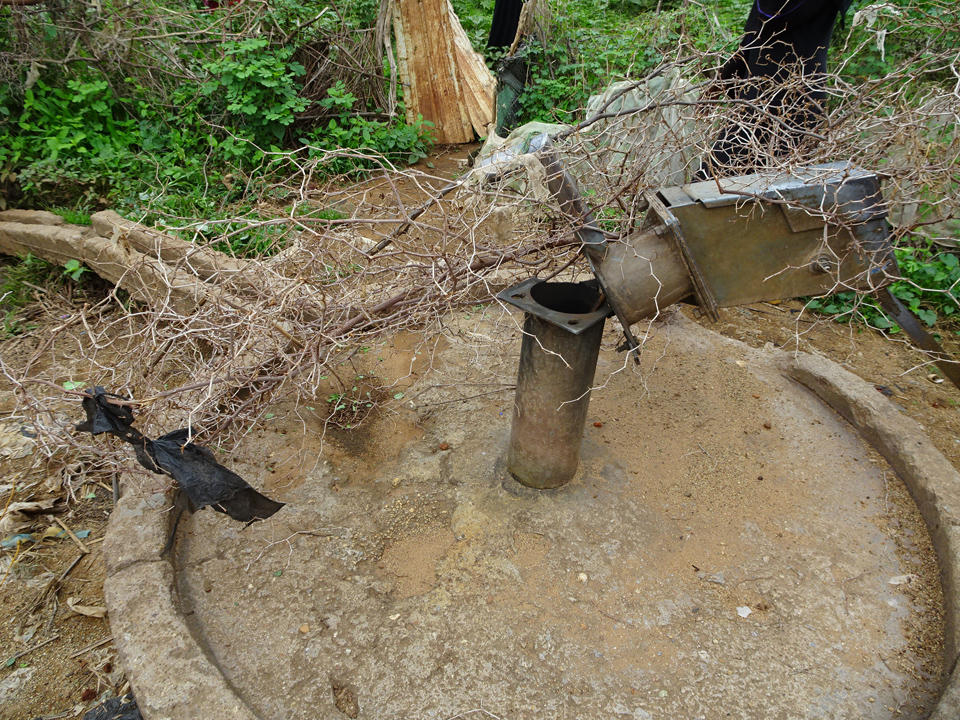
A hand pump well, unusable and broken down
Of course, this is partly the responsibility of the aid workers, and the diffusion of the idea within the community that if something breaks, the NGOs will fix it. However, these facilities and installations were looted and destroyed during this year’s armed conflict, so there are limited resources to live on. Moreover, once the situation stabilizes, the refugees will have to return to their hometowns and rebuild their lives on their own. Since the government has limited funds to spend, they must be able to provide for themselves.
What kind of public property is there? Why does it need to be protected?
First, we asked what types of public property are in the community. Everyone, if you were to make a list of all the public property in your town, what would you come up with? We asked this question to five communities in Kaduqli and came up with a list like the one below.
- Trees
- Mountains
- Mills
- Schools/the kindergarten
- Water supply facilities (wells)
- Medical clinics
- Mosques (or churches, depending on the community)
1.Trees
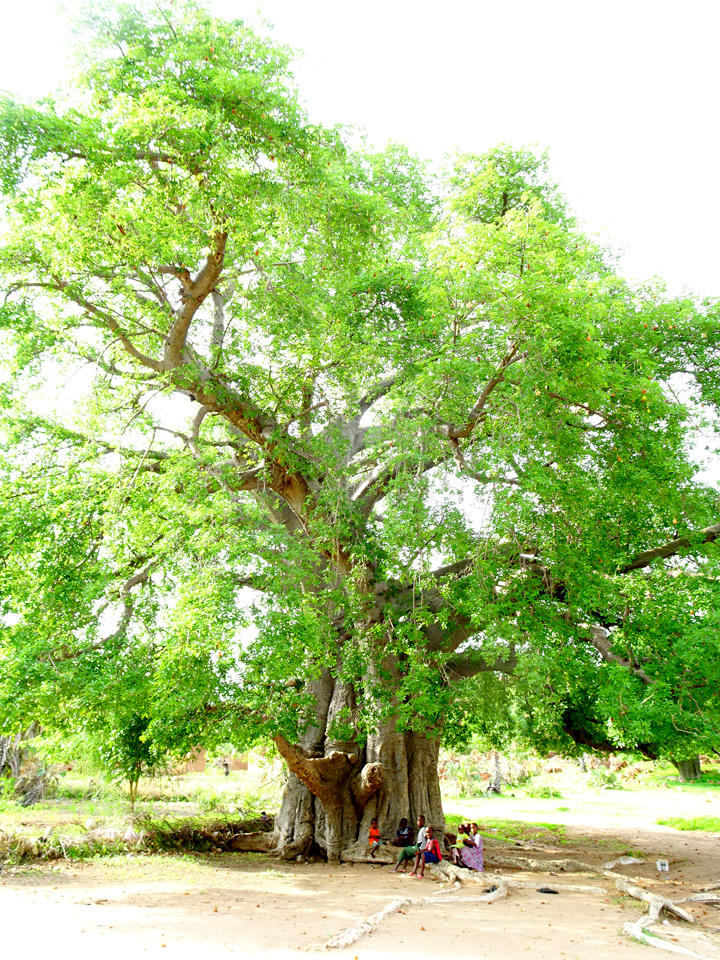
The sunlight is harsh in Sudan, so in many towns (not just Kaduqli), people usually gather under the trees. It is a place for drinking tea, talking– in other words, a place for everyone to rest. We often meet with Kaduqli residents not in buildings, but under the trees.
2.Mountains
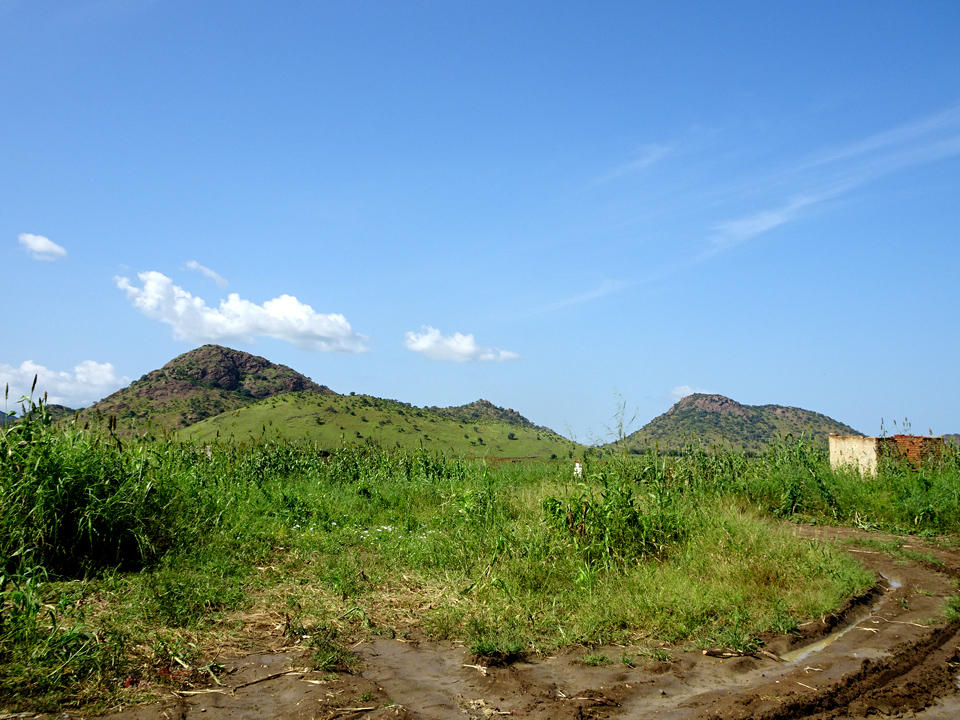
The Nuba Mountains, said to have 99 unique mountains.
The terrain of this area is very different from that of the desert region of northern Sudan. This area is called the Nuba Mountains and has mountains approximately 1,000 meters tall. Many said that these mountains are a place to hide when fleeing from military conflict, and that during the conflicts of 2011 and this May, the mountains protected them. This is a world that is hard for us in Japan to even imagine.
3.Mills
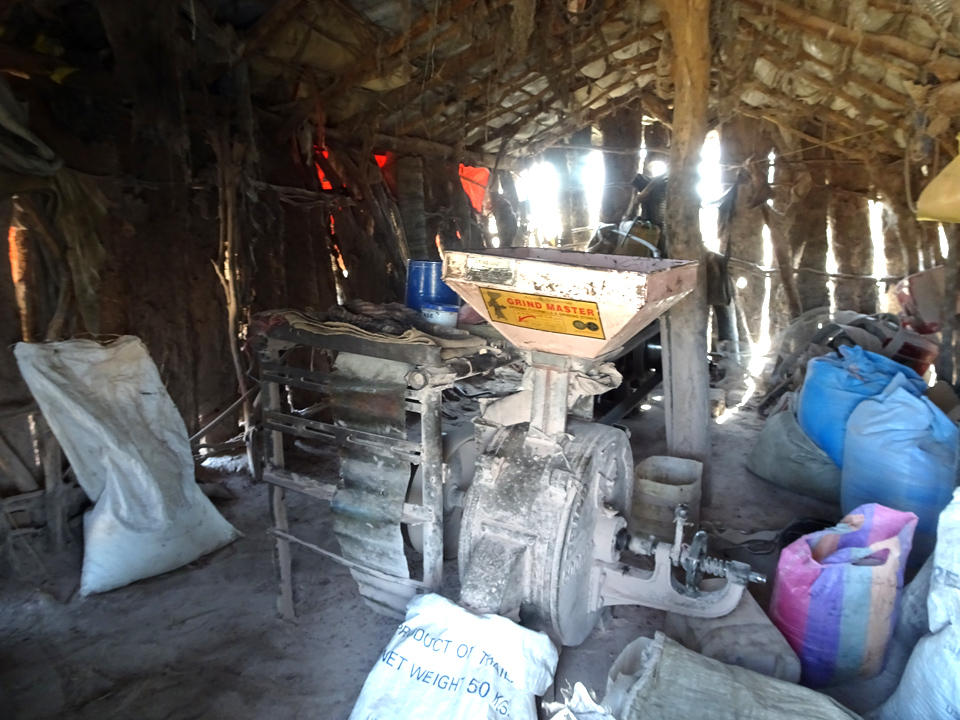
Milled sorghum is used when cooking dishes such as asida (almost like a loose version of mochi rice cake) and kesera (baked like a crepe) and is considered a staple ingredient.
Sorghum (a millet), which is the main crop grown in Kaduqli, must be milled to be used in cooking. However, if there is no community mill or the mill has broken down, residents must go to the market. One resident said that going to the market is expensive and time-consuming, and even the transportation costs are nothing to be sneezed at; because of this, she will sometimes make the difficult walk there.
4.Schools
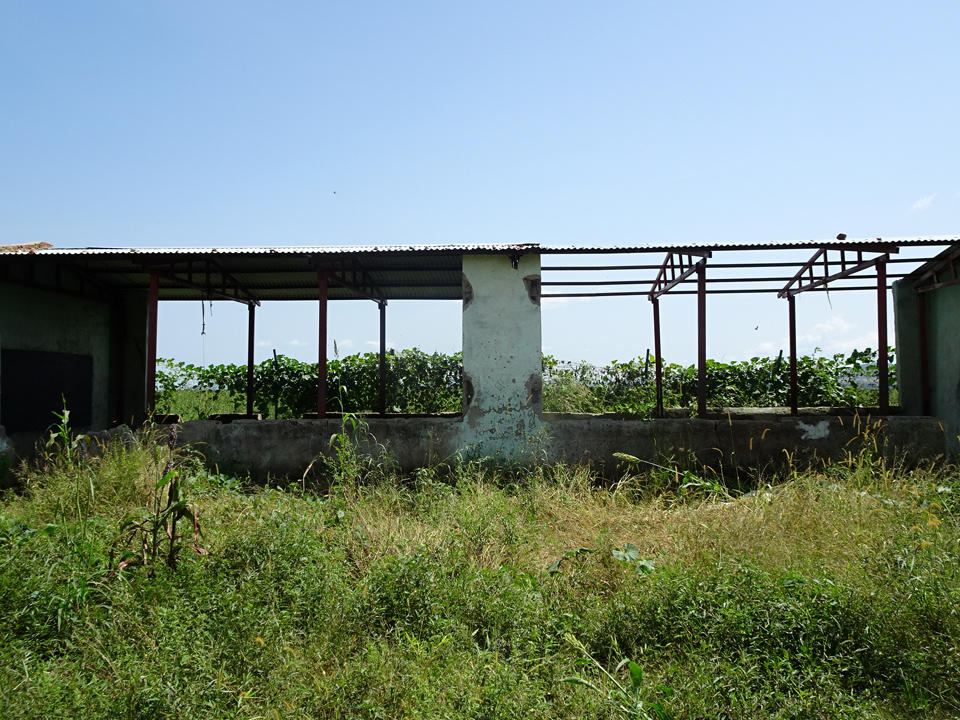
School building bombarded during military conflict. The roof was looted.
The governor of South Kordofan recently described the condition of education in his state as “tragic.” The percentage of children who graduate from elementary school (in Sudan, an eight-year system) is only 12%, and the graduation rate has been the lowest of all the states in Sudan for many years. Under these circumstances, JVC has implemented supplementary lessons. During our discussion, mothers spoke about how education will lead the children from darkness to light, how it is important because it helps the children become independent and eventually give back to their families, and how even the school building itself can be a good place for community meetings. They talked about not only the importance of “school,” but also the importance of an “education.”
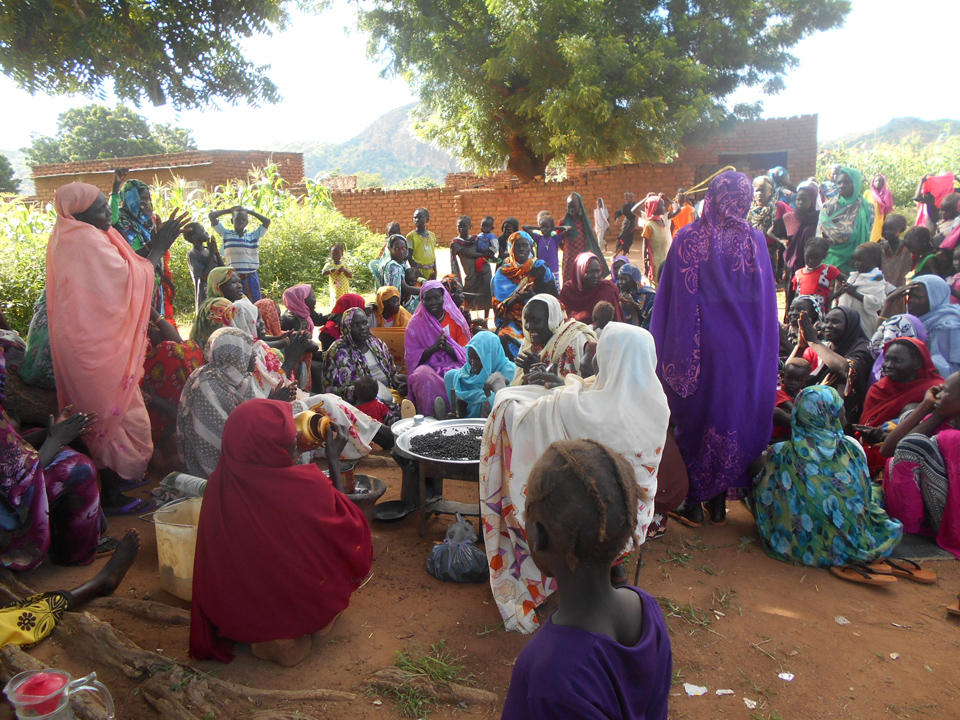
Women participating in the workshop. On this day too, we met under the trees.
The goal of the supplementary school is to help the children go on to study at formal schools and ultimately continue their education. For that, we must support not only the mothers but the entire community. We will continue to work with them to support the children’s educational opportunities.
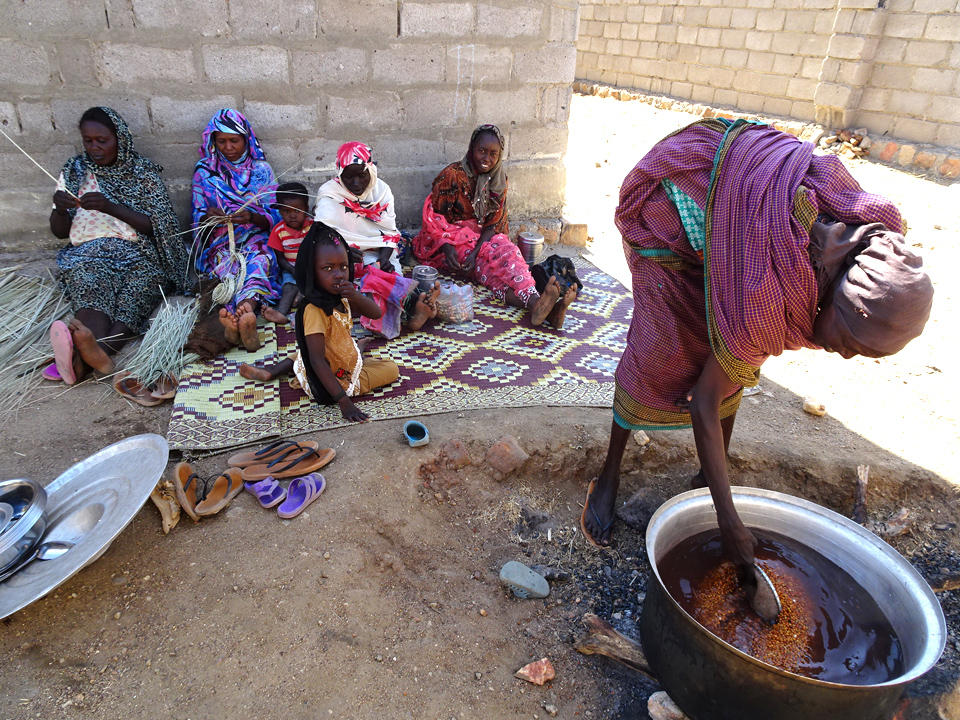
The mothers volunteer to cook lunch for the supplementary school, not only supporting the children through nutrition, but also providing a reason for parents to send the children to school.
